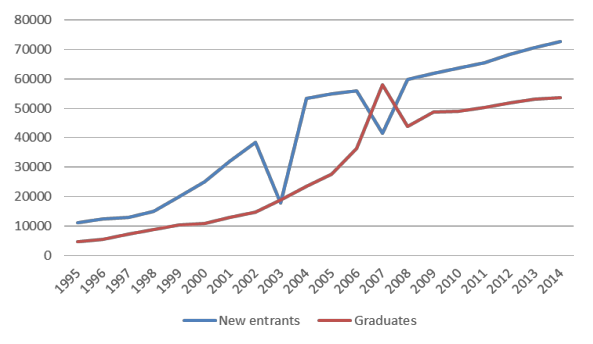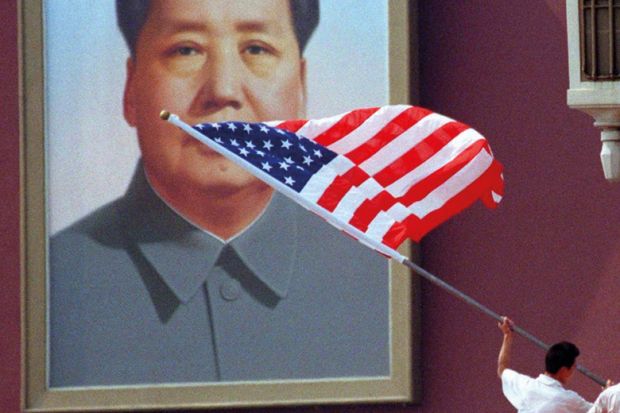Chinese doctoral education has shifted from a Soviet to a US model, according to a working paper that demonstrates the growth and improvement of PhD education in the country.
The paper, “From the former Soviet patterns towards the US model? Changes in Chinese doctoral education”, finds that although there is still evidence of the impact of Soviet ideas, PhD study has become increasingly influenced by the US since the mid-1990s.
Futao Huang, professor at the Research Institute for Higher Education at Hiroshima University and international co-investigator for the UCL Institute of Education’s Centre for Global Higher Education, who conducted the research, found that doctoral education and training is now based on coursework and a structured curriculum, accompanied by a comprehensive exam and the submission of a doctoral dissertation, in a similar way to the US system.
In addition, while engineering, science and medicine are still considered to be “priorities” for PhDs, social science subjects such as management, law and economics have begun to occupy a larger share of the doctoral education sector in China.
Meanwhile, doctoral education and training in China has relied more on individual universities and less on research institutes, owing to the rapid expansion of research universities since the late 1990s, which suggests that “the impact of the former Soviet academic system on China has declined”.
Formerly, there was a clear division of labour between the two parts of the sector in a similar way to the old Soviet model, with universities producing professional and vocational graduates and research institutes undertaking research activities, according to the study.
Changes in the number of doctoral graduates in China by sector, 1995-2014

The research highlights the reforms made, at both the national and institutional levels, to the old Chinese higher education system modelled on the Soviet Union.
These changes include the building of large comprehensive research universities through merging specialised institutions; the implementation of national policy and strategies of creating several world-class universities; and the “massification” of Chinese higher education, particularly since 1998.
These changes have led to the growth and improvement of doctoral education in China, according to Professor Huang. Between 1995 and 2014, the number of new entrants at PhD level increased more than sixfold and the number of graduates increased more than 10-fold.
Changes in the number of new doctoral entrants and graduates in China, 1995-2014

The paper also highlights several challenges, largely due to the rapid growth of doctoral education, increased marketisation or deregulation of government control, and the lack of quality assurance mechanisms.
Although there has been growth in the number of inbound international students studying doctoral programmes in Chinese universities, they constitute a “tiny proportion” when compared with the US, the UK, Australia and Japan. The proportion of international academics in doctoral programmes is also low.
Academic corruption is also an issue at the doctoral level, Professor Huang continued, claiming that “many universities spend a lot of money on ‘public relations’ or use their networking to influence reviewers who evaluate their application to provide doctoral programmes”.
There are also examples of government leaders and business people seeking doctoral degrees despite the fact that they cannot fulfil the minimum requirements for graduation from a doctoral programme, he said.




